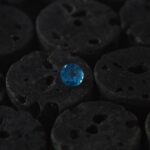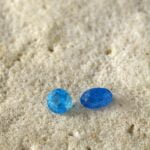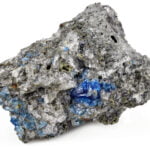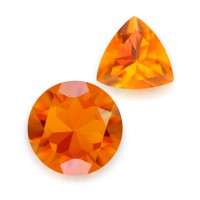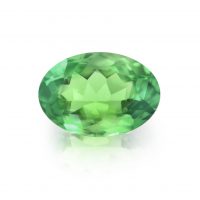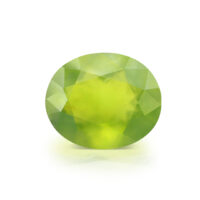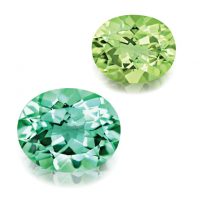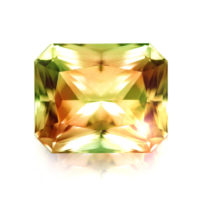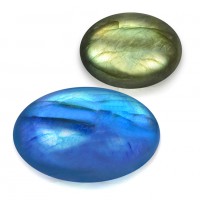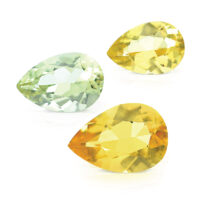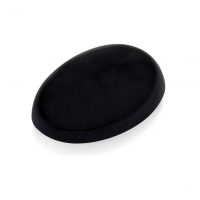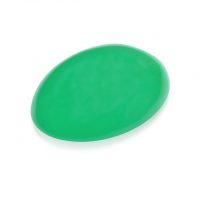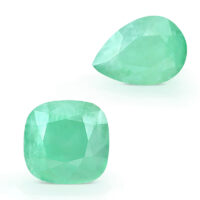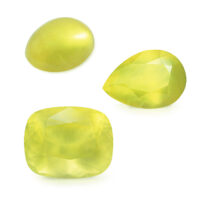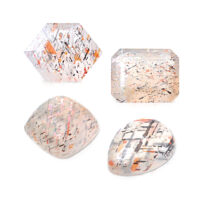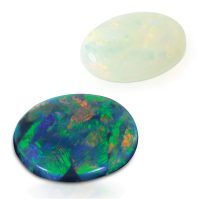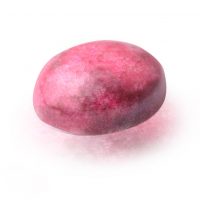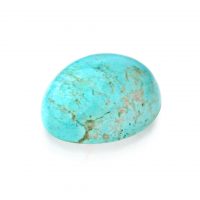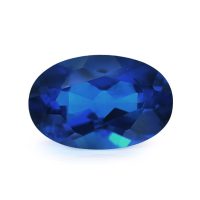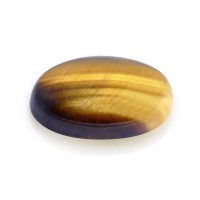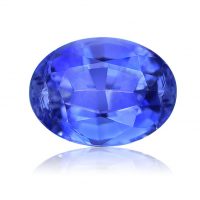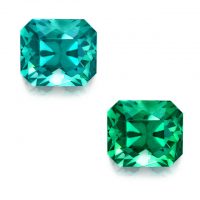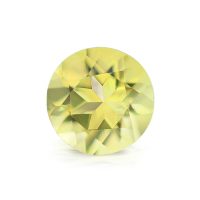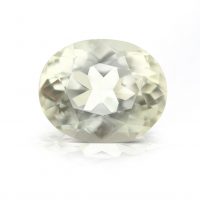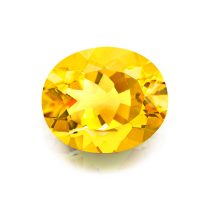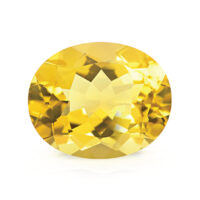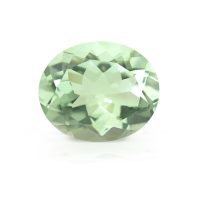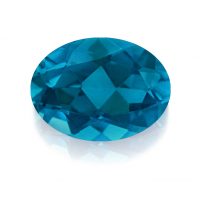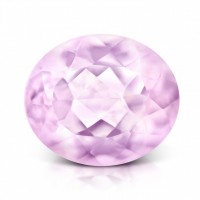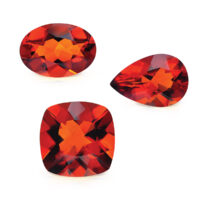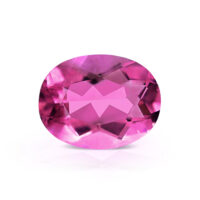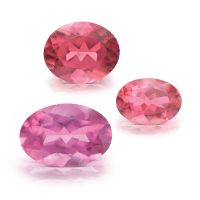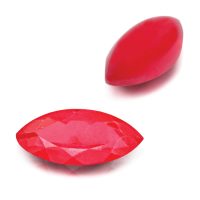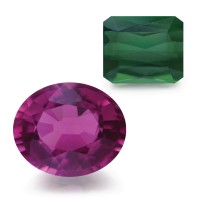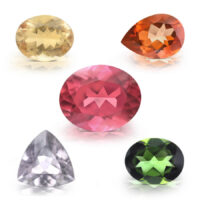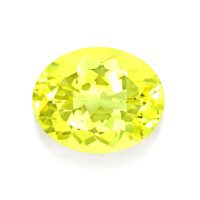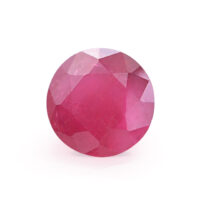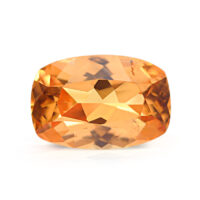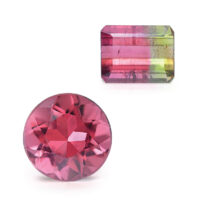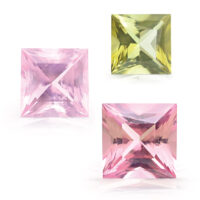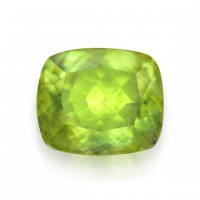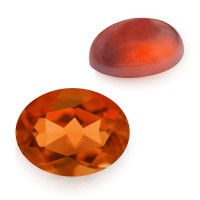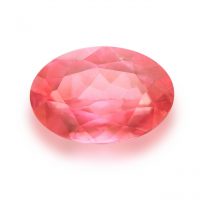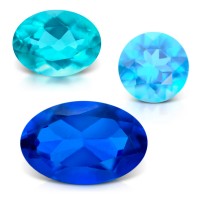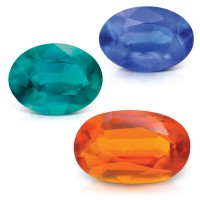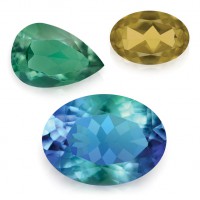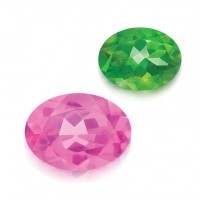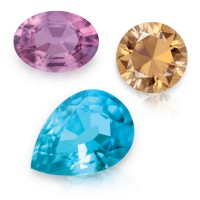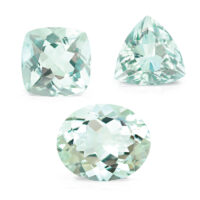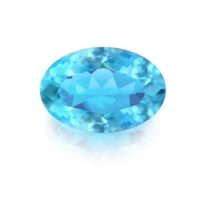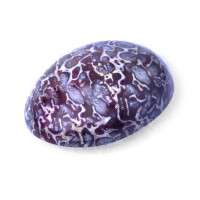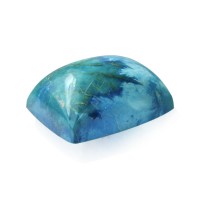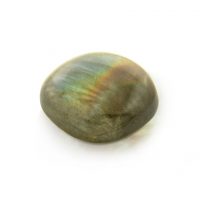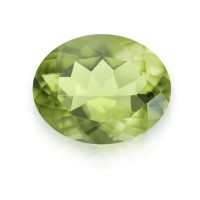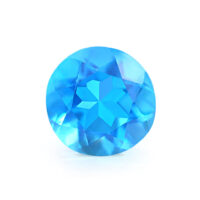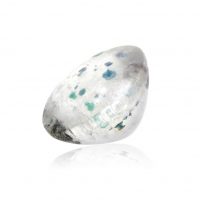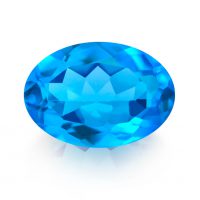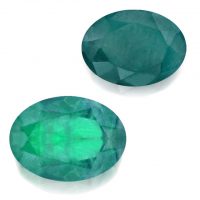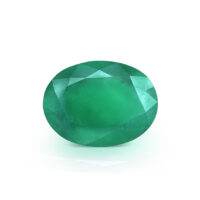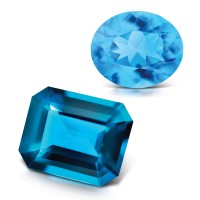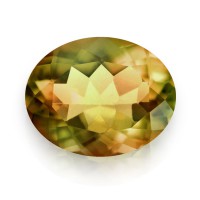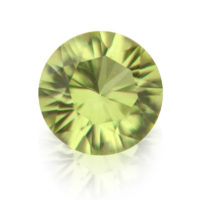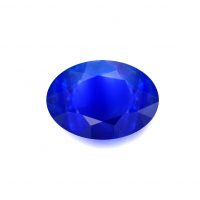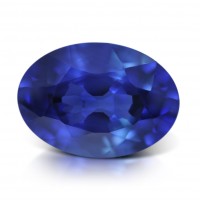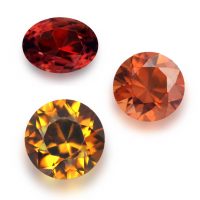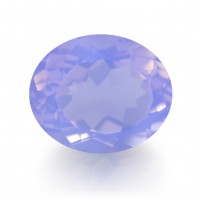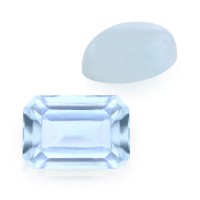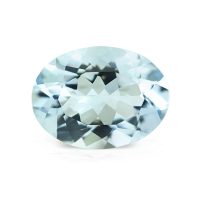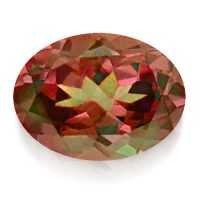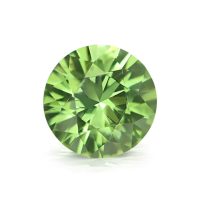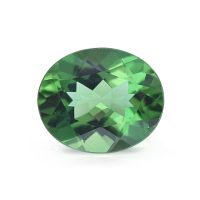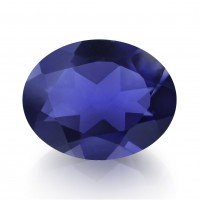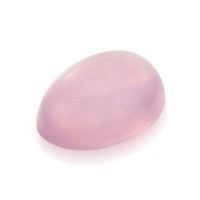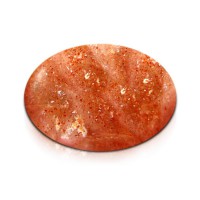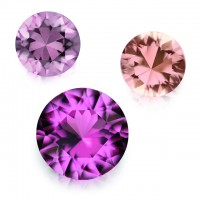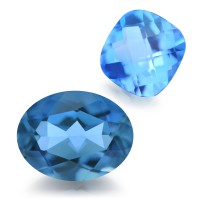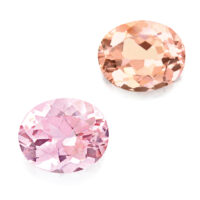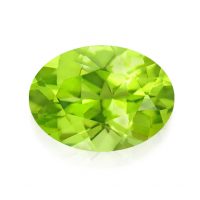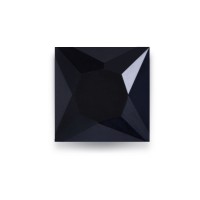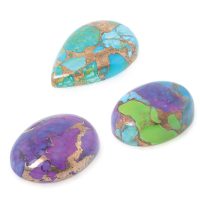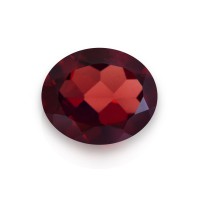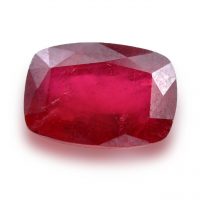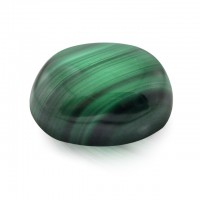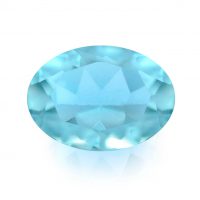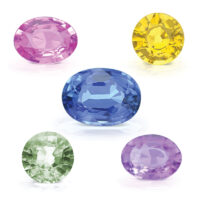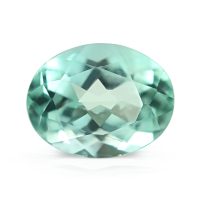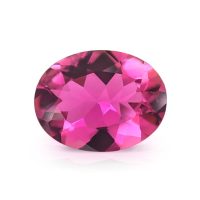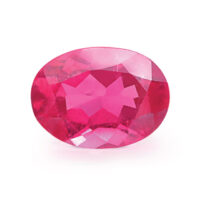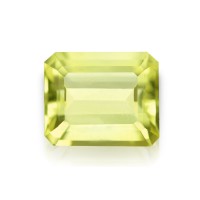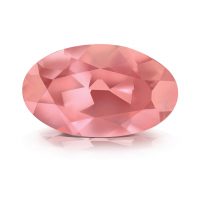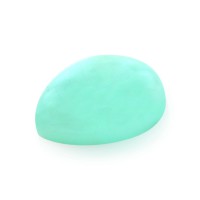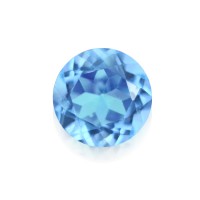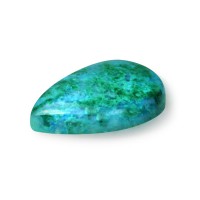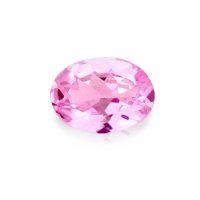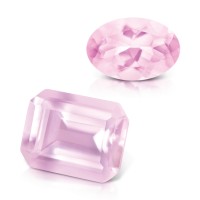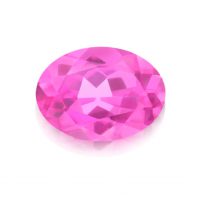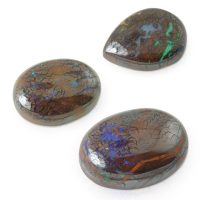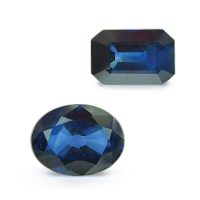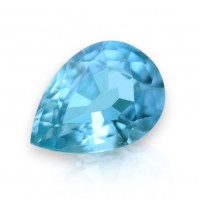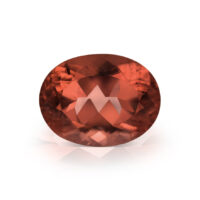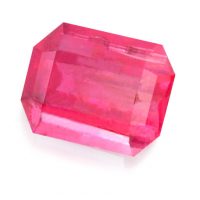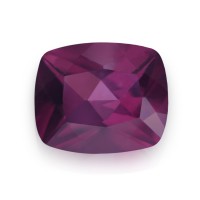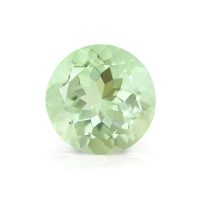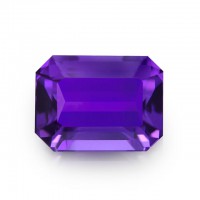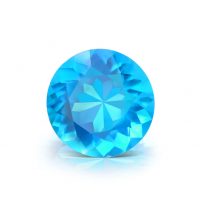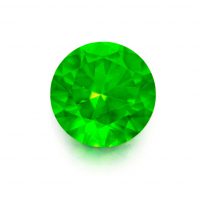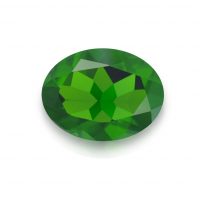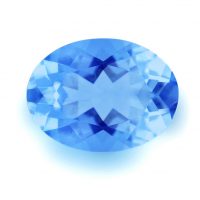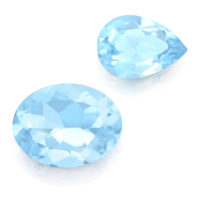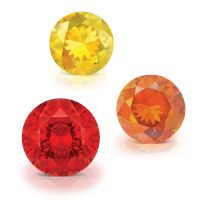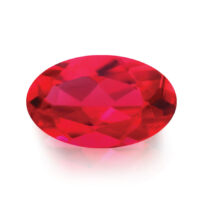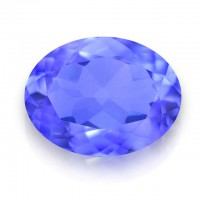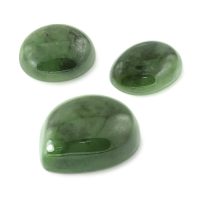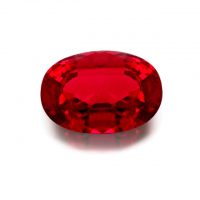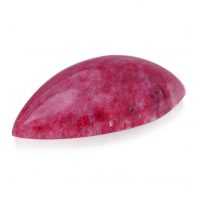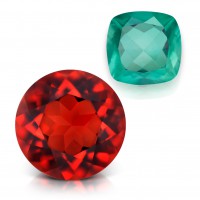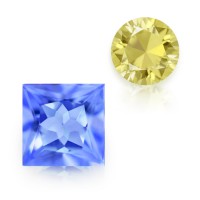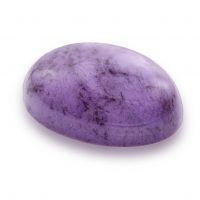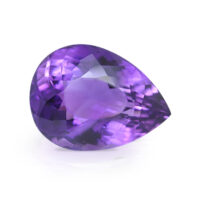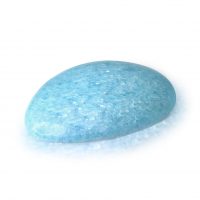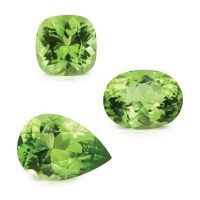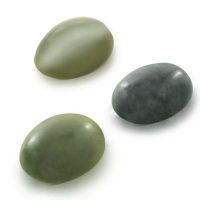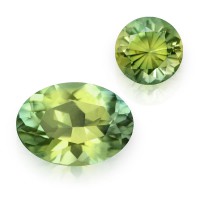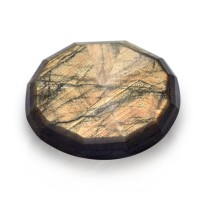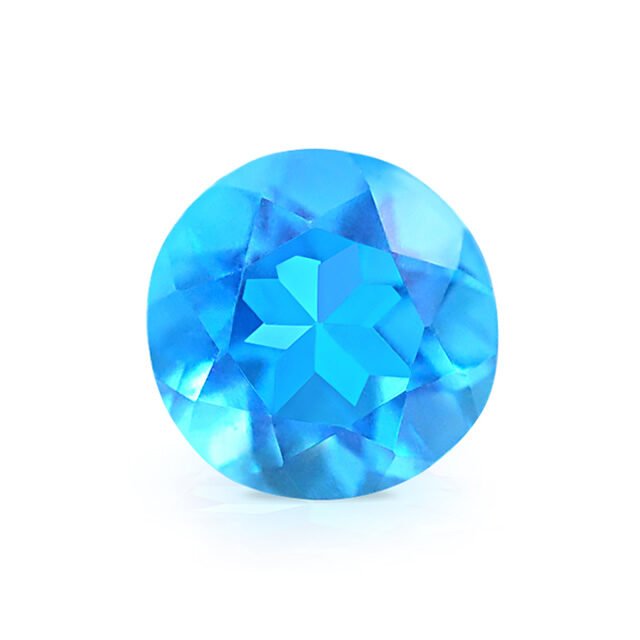

Visualize the beautiful allure of the bright blues of Lapis Lazuli, but faceted and transparent… German Haüyne (pronounced: hoween) is arguably the bluest of all blue gemstones. Extremely scarce, German Haüyne was discovered in 1807 and is exclusive to the Rhineland’s Eifel Mountains. Traditionally a collector’s gemstone rarely seen in jewelry, ours display their signature, vivid blues, excellent clarity, and optimal lapidary, affording exceptionally colorful brilliance. In spite of its stunning color, German Haüyne is impossibly rare and extremely valuable. Due to increasing international demand, prices have risen enormously in recent years, with any clarity, cut, size, saturation, or tone finding a ready buyer.
Hardness 5.5 – 6
Refractive Index 1.50
Relative Density 2.40 – 2.50
Enhancement None
Beauty
While Haüyne comes in shades of gray, green, pink, red, white and yellow, German Haüyne’s bright, intense blues with a desirable medium-light to medium-dark saturation and tone, have made this country the world’s premier source. While older texts often describe it as possessing a ‘Ceylon Sapphire-esque’, rich cornflower blue, there is sometimes also a visual similarity to the famed, saturated neon blues of Paraíba Tourmaline.
Classified as a Type III gemstone (gems that grow with many inclusions in nature that are usually eye-visible) by the GIA (Gemological Institute of America), Haüyne like Emerald will have visible inclusions, which are totally acceptable. While German Haüyne is noted for its characteristic inclusions, our gems display exceptional clarity for the type, ranging from moderately included to very slightly included, with many incredibly eye-clean, the highest clarity quality grade for colored gemstones.
Haüyne is extremely challenging for lapidaries due to its perfect cleavage (perfectly breaking into flat surfaces), limited availability, inherently small crystals, poor clarity, and low yield. Optimally cut, German Haüyne displays an excellent shape, finish, outline, profile and proportions, affording maximum brightness and beauty. Ovals and rounds are the norm for faceted German Haüyne, with most well-under 20 points. Interestingly, Haüyne has a comparatively low relative density, often appearing larger than its carat weight would imply.
Highly coveted as mineral specimens by collectors, German Haüyne is rarely cut. If transparent, Haüyne is faceted, while translucent gems are cut ‘en cabochon’ (cut in convex form and highly polished, but not faceted). For both cabochon and faceted Haüyne, look for a good shape and overall appearance, considering that due to their rarity, they are often cut to preserve as much of the original crystal as possible. Despite its scarcity and obscurity, German Haüyne is increasingly featured in expensive designer jewelry. For example, a German Haüyne, Diamond and Pink Sapphire butterfly brooch sold at Sotheby’s November 1999 Geneva auction for approximately USD45,000.
Haüyne, also known as Haüynite, is a rare silicate mineral belonging to the sodalite feldspathoid mineral group. Ranging from light blue to strongly saturated dark blue, depending on the sulfur content, German Haüyne sometimes fluoresces bright orange or red under low wave ultraviolet light. The intensity of this fluorescence is not only unusual, but also incredibly beautiful. Discovered by Carlo Giuseppe Gismondi near Lake Nemi (Lago di Nemi) in the Italian Latium region in 1803, he tentatively named the mineral ‘Latialite’ for the locality. Then uncommon to name minerals after their location, in 1807 deposits were also unearthed within Vesuvian lavas at Monte Somma in southern Italy, as well as at the Eifel Mountains. Haüyne was first described and named in 1807 by Danish scholar, Tønnes Christian Bruun-Neergaard (1776 – 1824), for the French crystallographer and mineralogist, Abbé René Just Haüy (1743 – 1822). The ‘Father of Crystallography’, Haüy was a Roman Catholic Priest and curator of the Muséum National d’Histoire Naturelle in Paris. Haüy devised and sold wooden crystal models, which remain highly prized internationally. The mineral was temporarily named Haüynite by James Dwight Dana in 1868. Rarely found and faceted as a distinct gemstone, Haüyne is one of the major mineral constituents in the popular gemstone, Lapis Lazuli, a rock comprised primarily of Lazurite and several other minerals, including Calcite and Pyrite. Haüyne typically occurs as small, rounded grains in lavas, but rarely as individual crystals, growing together with other minerals. Twinning (two crystals symmetrically sharing some of the same points) is also common. While Haüyne has been synthesized for geological research, there’s no known jewelry use of this lab-created material. Currently at the Technical University ‘Bergakademie Freiberg’, the largest known Haüyne crystal (3.2 centimeters) was found by a private prospector in October, 2012.
Rarity
Volcanic deposits containing Haüyne are exceedingly rare. Synonymous with its prized blues, the world’s finest Haüyne hails from the Eifel Mountains volcanic fields surrounding Laach Lake in Germany’s Rhineland-Palatinate.
While Haüyne is found in Australia, Ecuador, Italy, Morocco, Spain, and the USA, its ancient volcanos in Germany, and to a far lesser extent, Afghanistan, Burma (Myanmar), and Tanzania, are its most notable origins. Historically, only blue crystals from Germany have yielded gem-quality, but in 2003 gem-quality yellow-green Haüyne was discovered in Tanzania, and in 2006 gemologists reported blue gem-quality Haüyne from Afghanistan. Ultimately, these new discoveries were inconsequential; the Afghani Haüyne color quality is far below those from Eifel, with Germany remaining the source for blue, transparent facet-grade crystals.
At Eifel, Haüyne and other minerals formed in a magma chamber approximately 3 kilometers below the surface. This magma erupted approximately 12,900 years ago, and the resulting volcanic rocks were deposited in three zoned layers, with Haüyne found throughout. German Haüyne’s high cost is not only due to its beauty and geological scarcity, but also because commercial mining never took place, restricting its availability and awareness. German Haüyne crystals are found, extracted and collected directly from their pumice host-rock by amateur fossickers and prospectors, affectionately referred to as ‘rock hounds’ in the gem industry. German Haüyne mainly comes from commercial pumice quarries in Eifel, with the most significant fossicking dating to the late 90s early 2000s, over 20 years ago. While collectors still descend to search for these rare blue crystals after quarries’ pumice walls are periodically blasted, public access to these private pits is understandably regulated, further limiting supply.
Although Germany has been producing for a long time, accumulation of facet-grade German Haüyne is time-consuming due to the sheer scarcity of the mineral and its hand extraction. To put this context, rough Haüynes are sold by carat weight rather than the usual grams. While the rough crystals are fairly consistent in color/size/clarity, each crystal must be trimmed/scrapped using dental tools to remove the pumice host material. Once cleaned, the rough must be graded for their characteristic block spot inclusions. While these can be cut around if located on crystal sides, if in the center, it’s unsellable, resulting in approximately 10 percent rough loss before lapidary even commences. Unfortunately, cutting yields are also low, generally 5 – 10 percent, noting the typical return on a gem mineral is 20 – 35 percent. As most crystals are smaller than 5 millimeters, faceted German Haüyne usually weighs below 0.20 carats, with Haüyne larger than half a carat very rare, commanding very high prices.
Haüyne is undoubtedly an expensive, scarce gemstone, but if this is the case, why is it not on the top ten list of the world’s rarest and most valuable gems? Simply put, rarity can be a double-edged sword; sometimes it jeopardizes a gem’s commercial awareness and viability, relegating Haüyne to the very lucky few.
With over 90 percent of gemstones enhanced, Haüyne is sometimes impermanently (paraffin wax) or permanently (colorless liquid polymer resin) clarity enhanced. German Haüyne is totally natural and unenhanced, the marketplace ideal, accentuating both their rarity and desirability.
Durability & Care
German Haüyne is a relatively durable jewelry gemstone (Mohs’ Hardness: 5.5 – 6), perfect for special occasions. Always store German Haüyne carefully to avoid scuffs and scratches. Clean with gentle soap and lukewarm water, scrubbing behind the gem with a very soft toothbrush as necessary. After cleaning, pat dry with a soft towel or chamois cloth.
Map Location
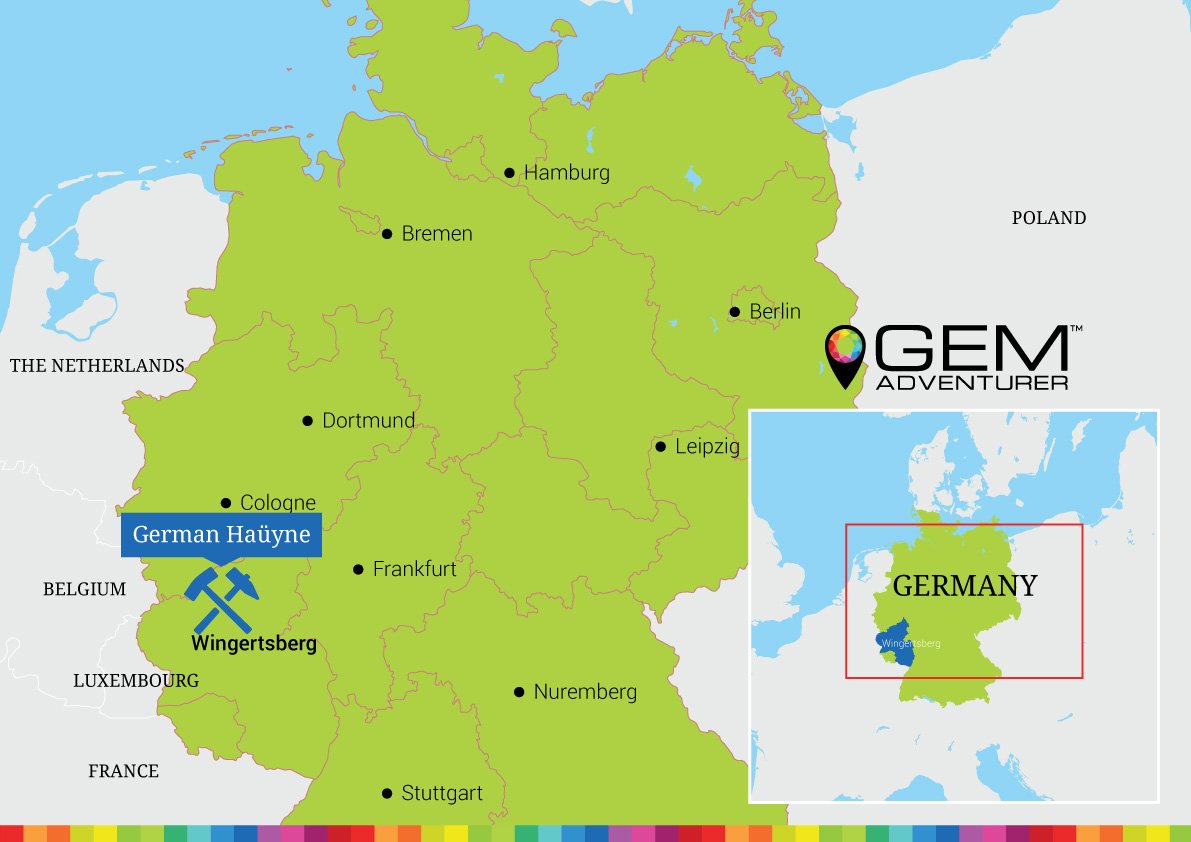
Click map to enlarge
